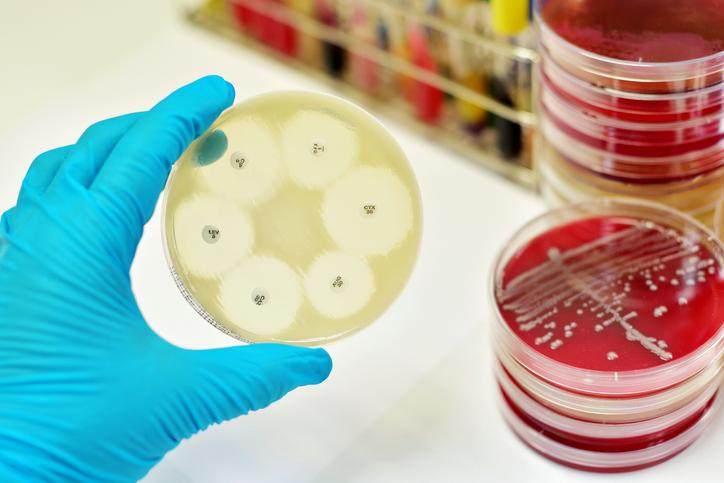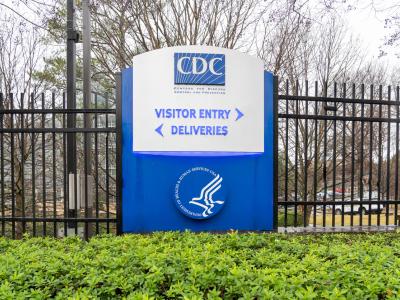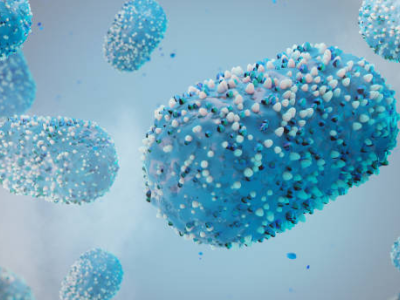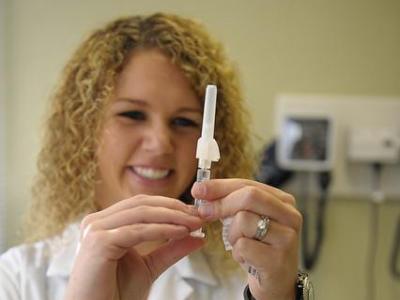In an effort to jumpstart and guide new antibiotic development, the World Health Organization (WHO) today released a list of antibiotic-resistant priority pathogens that agency officials believe are the greatest threat to human health and should be the target of research and development.
"This is truly urgent," Marie-Paule Kieny, PhD, the WHO's assistant director-general for health systems and innovation, said in a press conference. While the list isn't meant to scare people about new superbugs, Kieny explained, "It is intended to signal to the scientific community and the pharmaceutical industry the area they should focus on to address urgent public health threats."
Priority pathogens
At the top of the list are three types of gram-negative bacteria that are resistant to multiple antibiotics, including the last-resort carbapenems: carbapenem-resistant Acinetobacter baumanni, carbapenem-resistant Pseudomonas aeruginosa, and carbapenem-resistant, extended-spectrum beta lactamase (ESBL)–producing Enterobacteriaceae.
These pathogens, deemed a critical priority by the WHO, can cause severe and often deadly bloodstream and urinary tract infections in hospital patients who have weak immune systems and require invasive devices such as ventilators and catheters.
"These infections are responsible for high mortality rates, mostly in hospitalized patients, transplant recipients, those receiving chemotherapy, or patients in intensive care units," Kieny said. "While these bacteria are not widespread and do not generally affect healthy individuals, the burden for patients and society is now alarming, and new effective therapies are now imperative."
The critical pathogens are also challenging because their resistance elements are contained on pieces of highly mobile pieces of DNA and can easily spread to other bacteria, healthcare workers, and to the healthcare environment. "These bacteria are really spreading very frequently in healthcare facilities," said Carmen Pessoa Da Silva, PhD, an infection control and antibiotic resistance expert with the WHO.
Kieny explained that the agency broke the list into three categories—critical, high, and medium—based on the pathogens' level of resistance to treatment, mortality rate, prevalence, and the burden they place on the healthcare system.
Pathogens in the high-priority category—which can cause hard-to-treat infections in healthy people but generally don't have a high mortality risk—include vancomycin-resistant Enterococcus faecium, methicillin-resistant Staphylococcus aureus (MRSA), and fluoroquinolone-resistant Salmonella. Neisseria gonorrhea, a sexually transmitted infection that's becoming increasingly resistant to its main treatment options, is also in this category.
Pathogens in the medium-priority category include Streptococcus pneumoniae and Shigella spp. These bacteria, Kieny explained, still have some effective antibiotic options but are becoming increasingly resistant. While less dangerous than the critical pathogens, they are also more widespread in the community, especially in nursing homes, where there is more uncontrolled usage of antibiotics, WHO officials explained.
The WHO said it could not provide estimates on how many people die from being infected by these pathogens, because international codes for disease currently don't account for deaths caused by antimicrobial-resistant pathogens. Da Silva said those codes are being revised.
The US Centers for Disease Control and Prevention (CDC) estimates that at least 23,000 Americans a year die as a direct result of antibiotic-resistant infections, and the European Centre for Disease Prevention and Control (ECDC) says drug-resistant bacteria are responsible for 25,000 annual deaths in Europe. A 2014 report led by British economist Lord Jim O'Neill estimated that, if left unchecked, antimicrobial-resistant pathogens could cause 10 million deaths a year.
Dry pipeline
While the pathogens in the WHO list are well-known to public health officials, antibiotics to help conquer these threats aren't on the horizon. The reasons for this are both scientific and financial. Finding new antibiotics for multidrug-resistant bacteria is scientifically challenging, and clinical trials for these agents are difficult to conduct. In addition, pharmaceutical companies are reluctant to take on the challenge because research and development is expensive, and any new antibiotic they create would have to be used carefully to prevent bacteria from developing resistance to it.
As a result, there is little financial incentive to develop new antibiotics. "The pipeline is practically dry," Kieny said.
The WHO hopes that by targeting specific pathogens for which treatments are urgently needed, they can move the needle. But they also acknowledge that governments need to create policies that spur the public and private sectors to invest in research and development. Among the ideas proposed by O'Neill is a market-entry reward, in which companies that create a new antibiotic would receive up to $1 billion to recoup research and development costs. In return, those companies would have to ensure that the new antibiotic is available when necessary but not overused.
"This would delink profit from the volume of sales and make development financially attractive," Kieny explained
Another idea floated by O'Neill is the creation of a $2 billion global development fund for new antibiotics. So far, the United Kingdom and China have pledged $72 million to that fund.
Kieny said public health authorities need to be clear about what therapies are needed so that companies can know where to focus their energy. And then they need to collaborate with industry to help provide the incentives that will get the pipeline flowing again.
A global problem
Vance Fowler, MD, a professor of medicine at Duke University and member of the Infectious Diseases Society of America (IDSA), praised the WHO list, saying antibiotic resistance is a global problem that needs a global response. "Bacteria don't need passports, they don't need visas, and walls aren't going to slow them down," Fowler told CIDRAP News.
In addition, he said identifying carbapenem-resistant bacteria as the highest priority for research and development was "spot on."
"Carbapenems are our go-to antibiotics, used in the most critically ill patients," Fowler said. "So when we lose the ability to rely on these go-to antibiotics, we've got a big problem."
Fowler explained that urgency is needed because the options for patients with carbapenem-resistant infections right now are few, and they are "unsavory at best and potentially hazardous at worst." And the compounds that are in development to treat these infections are at least 10 to 15 years away.
Fowler cited the IDSA-supported 21st Century Cures Act, which includes a provision that would help speed new antibiotics to market, as a step in the right direction for antibiotic development. He also called for continued funding of government-driven antibiotic development efforts—such as those led by the Biomedical Advanced Research and Development Authority—and further incentives for private research, including tax credits.
"Without research, everything stops," he said.
WHO priority pathogens list
Priority 1: Critical
- Acinetobacter baumanni, carbapenem-resistant
- Pseudomonas aeruginosa, carbapenem-resistant
- Enterobacteriaceae, carbapenem-resistant, ESBL-producing
Priority 2: High
- Enterococcus faecium, vancomycin resistant
- Staphylococcus aureus, methicillin-resistant, vancomycin-intermediate and resistant
- Helicobacter pylori, clarithromycin-resistant
- Campylobacter spp, fluoroquinolone-resistant
- Salmonella, fluoroquinolone-resistant
- Neisseria gonorrhea, cephalosporin-resistant, fluoroquinolone-resistant
Priority 3: Medium
- Streptococcus pneumoniae, penicillin non-susceptible
- Haemophilus influenzae, ampicillin-resistant
- Shigella spp, fluoroquinolone-resistant
See also:
Feb 27 WHO report
Feb 27 WHO press release
Normal 0 false false false EN-US X-NONE X-NONE /* Style Definitions */ table.MsoNormalTable {mso-style-name:"Table Normal"; mso-tstyle-rowband-size:0; mso-tstyle-colband-size:0; mso-style-noshow:yes; mso-style-priority:99; mso-style-parent:""; mso-padding-alt:0in 5.4pt 0in 5.4pt; mso-para-margin:0in; mso-para-margin-bottom:.0001pt; mso-pagination:widow-orphan; font-size:10.0pt; font-family:"Times New Roman","serif";}





















